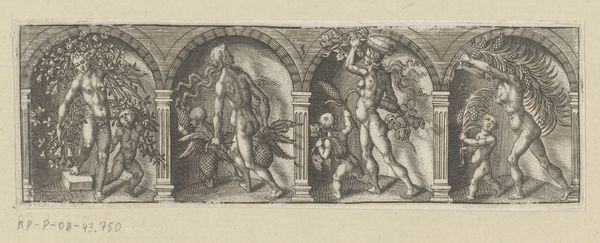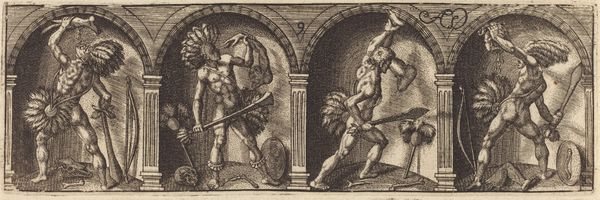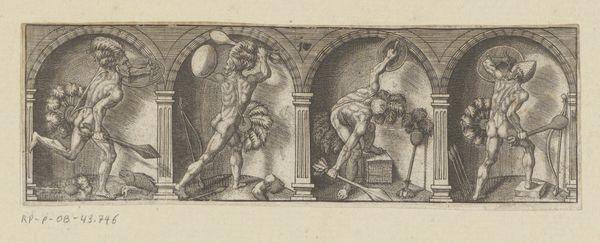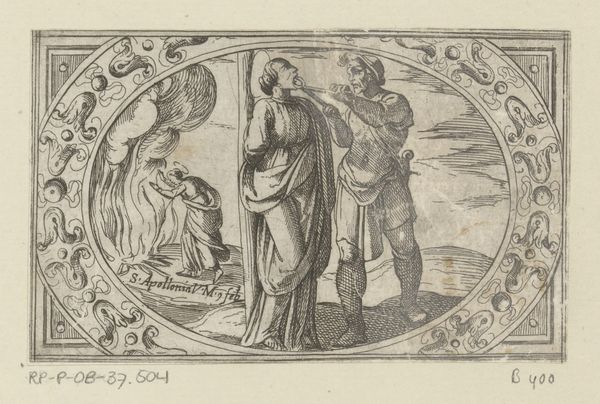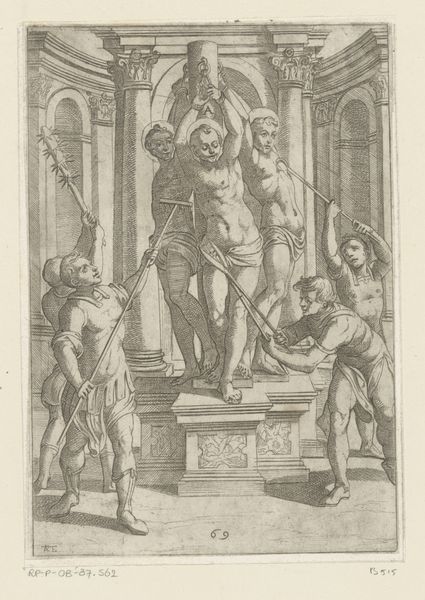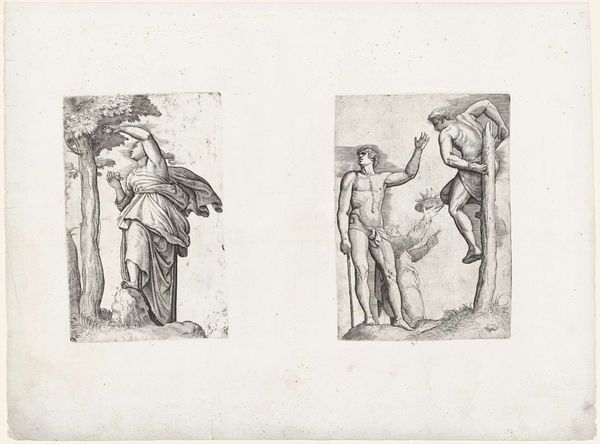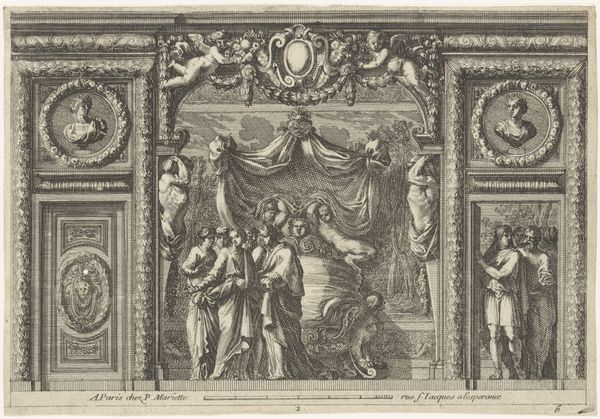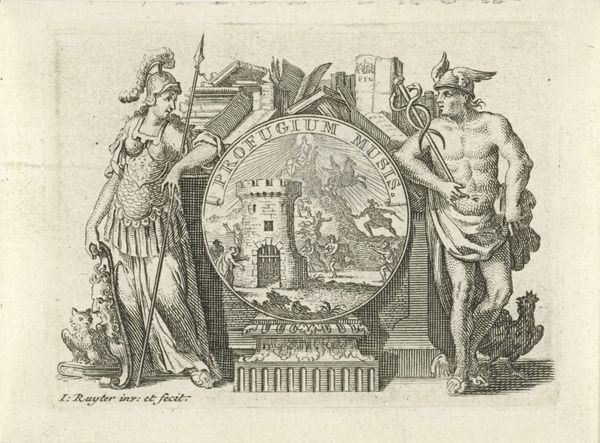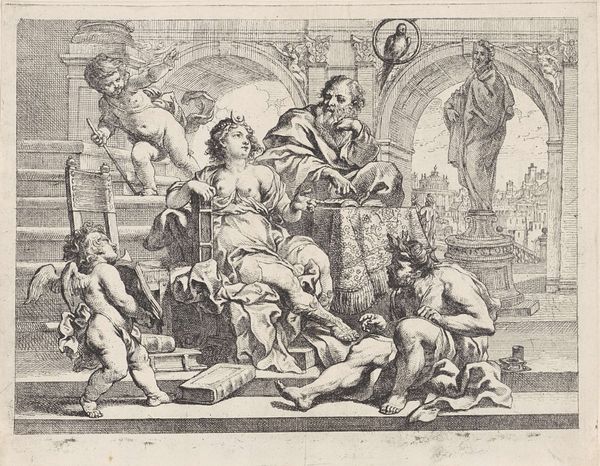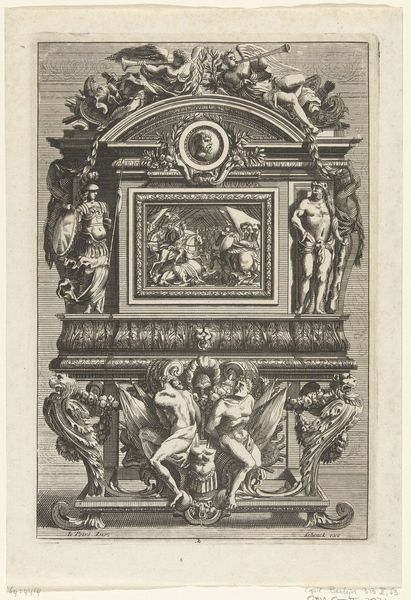
Vier figuren in niches, elk in een ander stadium van ontleding 1610 - 1640
0:00
0:00
antoinejacquard
Rijksmuseum
#
comic strip sketch
#
quirky sketch
#
sketch book
#
personal sketchbook
#
idea generation sketch
#
sketchwork
#
pen-ink sketch
#
sketchbook drawing
#
storyboard and sketchbook work
#
sketchbook art
Dimensions: height 47 mm, width 139 mm
Copyright: Rijks Museum: Open Domain
Antoine Jacquard created this etching, “Four figures in niches, each in a different stage of decomposition,” sometime between 1620 and 1650. It's a stark reminder of mortality, typical of the period. The print presents four figures, each in a niche and undergoing decomposition. This theme, known as 'memento mori', gained traction during the Baroque period, reminding people of the fleeting nature of life. Jacquard was working in a Dutch Republic that had just won its independence from Spain, but was often ravaged by plagues. Death was an everyday reality. The print uses stark imagery to communicate its message: what do we make of the body? Do we glorify it, or acknowledge that it decays? Understanding the social and intellectual history helps us interpret the print’s meaning. Research into the history of medicine, religion, and social attitudes towards death are all useful tools for the art historian. Art isn't made in a vacuum, and remembering the context helps us understand it better.
Comments
No comments
Be the first to comment and join the conversation on the ultimate creative platform.

